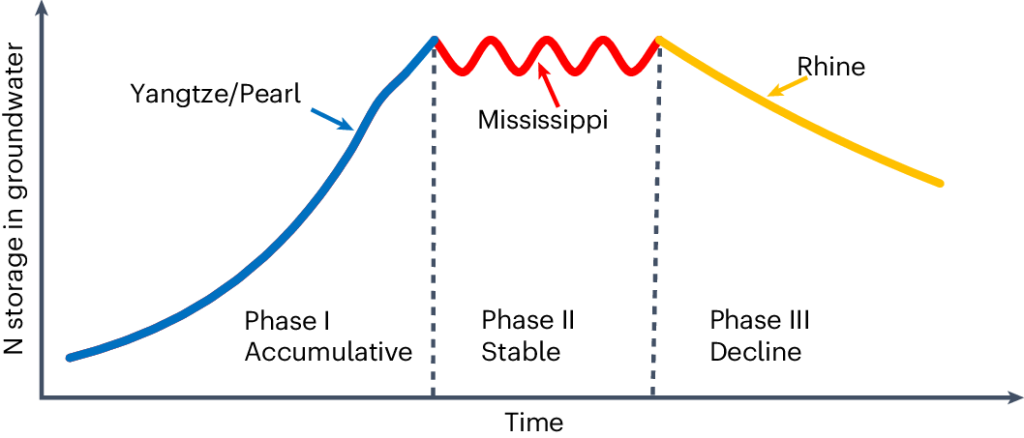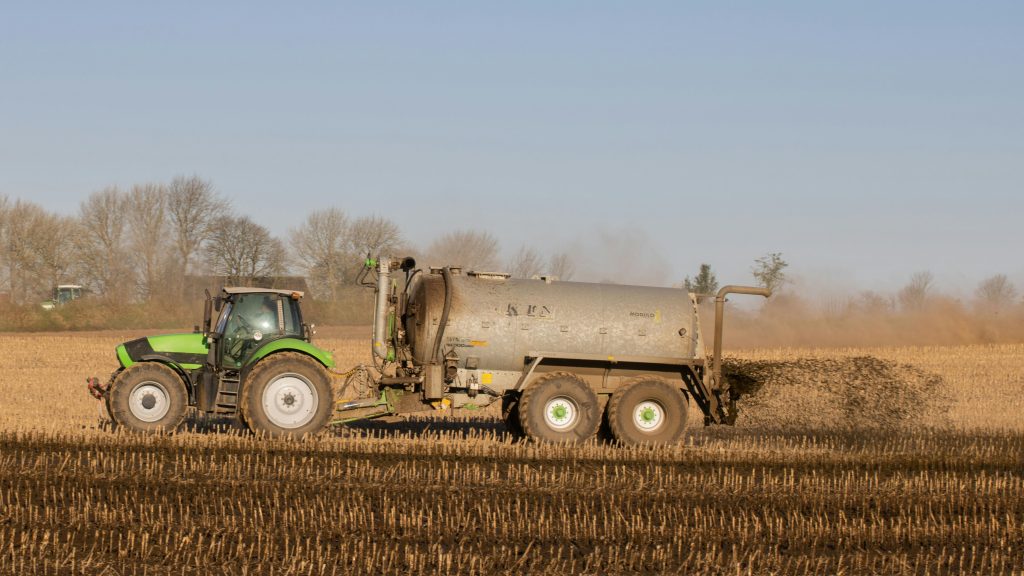Nitrogen legacy keeps rivers polluted for decades
Groundwater with high concentrations of nitrogen the largest nitrogen source for global river systems.
A new NESSC study finds that high nitrogen levels in groundwater currently forms the largest source of nitrogen for the Rhine, Mississippi and Yangtze rivers. This is a legacy of past agricultural practices, when large amounts of fertilisers were widely used. Nitrogen levels are expected to increase even further in the foreseeable future for the Yangtze and Pearl rivers in China. The researchers of Utrecht University and Deltares also show that environmental policies to reduce excess usage of nitrogen have successfully decreased the amount of nitrogen in the Rhine river.
The usage of synthesised fertilisers to boost agricultural crop yields since the start of the twentieth century caused a sharp increase in nitrogen concentrations in streams and rivers – but also in groundwater. Increased nitrogen pollution in water systems can cause all kinds of detrimental environmental effects, such as a rapid growth of algae, lack of oxygen in the water column or biodiversity loss.
Nitrogen legacy
Because groundwater migrates through the soil much slower compared to surface water, it can take years, sometimes decades, before the accumulated nitrogen finally returns to the surface. Researchers call this phenomenon the nutrient legacy: practices of the past can still influence the water quality of today – or even that of our future.
In a new study, researchers from Utrecht University, Deltares and the Netherlands Environmental Assessment Agency (PBL) reconstructed the dynamics of the nitrogen legacy within groundwater across four major river basins (Rhine, Mississippi, Yangtze, and Pearl rivers) from the start of the twentieth century up to 2015. They also calculated how the nitrogen from groundwater, thus the nitrogen legacy of the past, is expected to change under different scenarios until 2050.

Environmental policies pay off
The results show how the nitrogen legacy in the four studied rivers have sharply increased since the 1950s. Notably, the researchers conclude that nitrogen from groundwater currently forms the largest source of nitrogen input for all four rivers. Nitrogen concentrations in the Yangtze and Pearl rivers are expected to keep increasing until at least 2050.

The new study further shows that environmental policies to reduce nutrient contamination pay off. “Environmental policies can work, but the impact of nitrogen legacy built up over time plays a big role if they will succeed,” adds NESSC researcher Junjie Wang (Utrecht University). As a result of environmental policies, nitrogen levels in the Mississippi river have stabilised over time (see illustration) and in the Rhine river nitrogen concentrations have successfully decreased, with a further decline expected by 2050, tells researcher Xiaochen Liu (Deltares). “The Rhine basin has entered the nitrogen decline phase. Our work shows that the effective best practices used in the Rhine can be implemented in other global river basins to help achieve sustainable development goals (SDGs). We also introduce a three-phase framework for groundwater nitrogen legacy, providing key insights for policymakers.”
The researchers underline that strategies to address the nitrogen legacy in groundwater for different regions are required to achieve a sustainable water conservation management.
Article:
Impact of groundwater nitrogen legacy on water quality
Liu, A.H.W Beusen, H. J.M. van Grinsven, J. Wang, W.J van Hoek, X. Ran, , J. M. Mogollón, A.F. Bouwman
Nature Sustainability, 2024
https://doi.org/10.1038/s41893-024-01369-9


